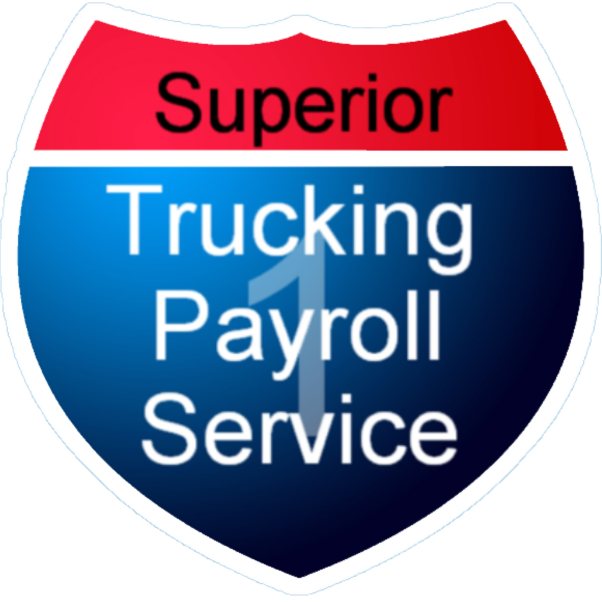Last updated [10/28/24] to provide current insights into truck driver pay, including recent CPM data.
The trucking industry relies on drivers to keep goods moving across the country. For these drivers, pay often comes down to cost per mile (CPM), which determines how much they earn for every mile on the road. Right now, the industry’s average CPM falls between $0.45 and $0.85. We know it’s a wide range! But the range is influenced by many factors like the type of load a driver hauls and their level of experience.
To find the latest data on truck driver pay, the U.S. Bureau of Labor Statistics provides insights into last year’s numbers, covering pay rates by state. Additionally, the Driver Pay Index offers monthly updates so you can stay on top of current wage trends.
Truckers don’t just have a job—they have a lifestyle that comes with unique challenges, from tight delivery deadlines to long hours, heavy traffic, and time away from home. These factors, along with experience and the type of load, can impact a driver’s take-home pay each week. In this article, we’ll break down what goes into CPM pay so you can better understand how to approach pay decisions for your company and drivers.

Why Trucking Companies Use CPM Pay (and What It Means for Drivers)
Most truck drivers get paid per mile instead of by the hour. There’s a reason for that. Pay per mile makes it easy to track earnings and reward drivers based on the miles they cover. Companies also like CPM because it’s straightforward and allows them to motivate drivers to cover more ground.
For drivers, being paid per mile can feel fair, especially when they can rack up good miles each week. Many companies offer extra incentives, like bonuses for high mileage and safe driving, which help increase the overall paycheck. These incentives can help drivers hit a solid income by rewarding their hard work on the road.
However, CPM is not a perfect fit for every trucking position. For drivers who spend a lot of time in urban areas or have frequent stops, other pay structures like hourly or salary might better reflect their work. Each pay structure has its strengths and drawbacks, so let’s look at the pros and cons of CPM.
Pros and Cons of CPM Pay for Truck Drivers
Like any pay method, CPM has both positives and drawbacks. Here’s a breakdown of the points that drivers often consider when they think about being paid per mile.
Pros of CPM Pay for Truck Drivers
-
High Earning Potential for Drivers
For drivers who cover long distances each week, CPM can add up quickly, leading to decent weekly and annual earnings. -
Clear and Trackable Miles
Because CPM is based on miles, drivers know they’ll earn more when they drive more. This structure is easier to understand than hourly pay and can make earnings more predictable. -
Incentives and Bonuses
Many companies offer bonuses for top mileage, safe driving, and sometimes even for fuel efficiency, all of which can boost total pay.
Cons of CPM Pay for Truck Drivers
-
How Delays Affect Earnings
Traffic jams, waiting at loading docks, or driving slower in cities can increase the time it takes to reach their overall mileage. Although the total miles will stay the same, delays mean reducing the potential for earning additional mileage that week. -
Weather and Breakdowns
Bad weather or unexpected breakdowns can also slow a driver down. For CPM drivers, less time moving on the road means less money in their pockets.
When weighing these pros and cons, many drivers feel that being paid per mile still provides solid earning potential. For those who prefer the freedom of life on the road and enjoy covering long distances, CPM remains a strong option.

How Much Truck Drivers Earn Weekly
To get a weekly estimate of CPM pay, let’s look at the average miles a truck driver might cover. Most solo truck drivers drive between 2,000 and 3,000 miles weekly. If we use the CPM range of $0.45 to $0.85, we can see how this adds up:
- Low End: At $0.45 CPM and 2,000 miles, a driver might make $900 per week.
- High End: At $0.85 CPM and 3,000 miles, weekly pay could reach $2,550.
For Team Drivers, the setup is a bit different. Team Drivers take turns driving, allowing them to cover more miles in a week than a solo driver. However, since team drivers split their pay and drive higher miles, their individual CPM may be slightly lower to account for the increased weekly mileage.
These numbers show a wide range, but that’s because a driver’s pay depends on many factors, like how many miles they’re able to drive, the driver’s experience, the type of load they’re hauling, and whether they receive any additional bonuses.
Factors That Influence CPM Rates
Several factors can influence how much CPM a truck driver earns. Understanding these can help drivers make informed choices about their jobs and the types of certifications or endorsements they may want to pursue.
How Driver Experience and Clean Records Impact CPM Pay
New drivers usually start at the lower end of the CPM range. But with experience, drivers can earn better pay as companies value seasoned drivers who know the industry. Time on the road isn’t the only factor that matters—maintaining a clean driving record, building good working relationships, and showing loyalty to a company can all contribute to better pay. These qualities demonstrate reliability and commitment, which many companies are willing to reward.
Why Freight Type Matters for CPM Rates
The type of goods being hauled affects CPM. For example, hauling hazardous materials, heavy loads, or oversized freight requires extra skills and additional endorsements, leading to the highest pay. Flatbed loads often pay higher than other types, like dry vans. This is because flatbed drivers have the added responsibility of securing and tarping their own loads, which requires extra skill and effort. Companies recognize this additional work and typically offer a higher CPM to flatbed drivers.
Local or dry van deliveries may pay a bit less since these trips are generally simpler and closer to home. These types of freight often involve straightforward loading and unloading, which doesn’t require the same level of handling or risk as flatbed or specialized hauls.
Why Your Driving Region Affects CPM Rates
The origin and destination of a load can make a big difference in CPM. Some regions pay higher rates due to challenging delivery conditions. For example, loads coming from or going to big cities often involve extra hazards like heavy traffic, numerous tolls, and other headaches that make the job more demanding. Drivers handling these routes earn more per mile to compensate for the added stress and delays that city driving brings.
Certifications and Endorsements for Higher CPM
Drivers with extra certifications, like a HAZMAT or doubles/triples endorsement, can earn even more. These qualifications allow them to haul specialized or dangerous loads, which typically come with a higher CPM.
How Company Size Impacts Pay Rates
Some smaller companies may pay lower rates due to limited resources, but large carriers may offer better pay and stability. However, smaller companies might have flexible schedules or personalized perks that larger companies don’t offer. It all depends on what’s most important to the driver.
Understanding the factors that influence CPM pay can help drivers make informed choices about their careers and maximize their earnings on the road.
How Trucking Companies Can Create Competitive CPM Pay Structures
Ensuring that your drivers are compensated fairly is crucial for maintaining a reliable, satisfied workforce. CPM pay remains one of the most common structures in the industry, and by understanding the factors that affect CPM—like experience, freight type, and route challenges—companies can offer competitive, appealing rates.
Remember, factors like challenging city routes, specialized loads, and driver experience directly impact pay and job satisfaction. When companies align pay with these variables, they’re more likely to retain skilled drivers who value transparency and fair compensation.
To stay informed on the latest trends in driver pay, your next step is to check out our Driver Pay Index. With monthly updates, this tool helps you make competitive decisions on pay rates that attract and retain top talent.
At the end of the day, providing fair and flexible pay structures supports a committed and productive workforce, ultimately strengthening your company’s success in the industry.
Written by Melisa Bush
With over 15 years of experience in the trucking industry, Melisa is well-versed in the complexities of trucking payroll and adept at navigating special circumstances. Before joining Superior Trucking Payroll Service, Melisa worked at a trucking company, where she managed driver miles and expenses for a fleet of 50 trucks. This hands-on experience gives her unique insight into the challenges our clients face when preparing their payroll data.
Melisa’s top priority is customer service. She strives to treat each client as an individual with genuine needs, rather than just another number in the system. Her goal is to alleviate the burdens of our clients and make their daily operations smoother.

